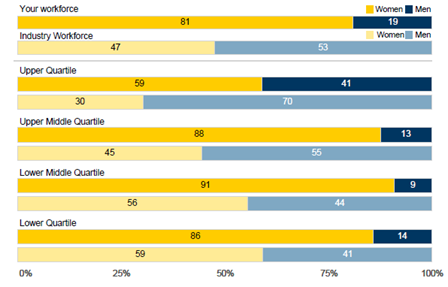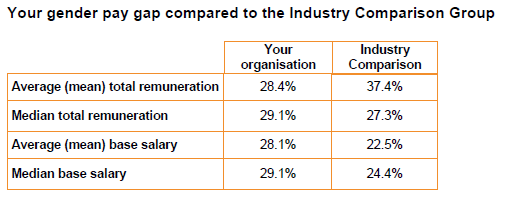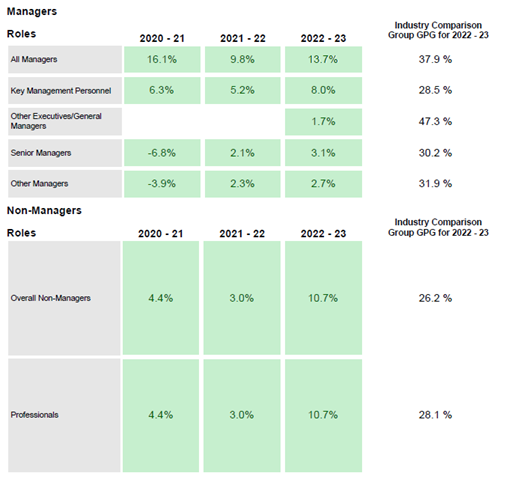At Queensland Country Bank, we continue to build a culture based on exceptional service, genuinely caring for our people and empowering our employees to reach their full potential. We are motivated to recruit the brightest, kindest and the best to help us innovate and grow. Our dedication to gender equality and more broadly, diversity and inclusion, is imbedded within our values of Putting People First, Being Genuine, Bringing our Best and Embracing Change.
We are a member-owned bank and are passionate about ensuring our workplaces reflect the members and communities we serve and that our staff have a strong connection to the community. By providing programs for staff to give back, such as our Volunteer Program; our Good for Good grants; Workplace Giving Program and Sponsorships, together with a strategic and public commitment to diversity, we will ensure that we recruit and retain staff who are aligned to our story of providing ethical and responsible banking and insurance services to Queenslanders.
The gender pay gap is the difference in the average pay of all men and all women in an organisation. This is different to pay equity, which is paying men and women the same pay for equivalent work. At Queensland Country we have been focused on equity within like-for-like positions. As part of our annual salary review process, Queensland Country conducts pay equity audits and industry benchmarking. In 2023, Queensland Country’s total remuneration gender pay gap was 9% lower than the banking industry average. Further, our representation of women across each level of our workforce is greater than the banking industry and we continue to outperform the industry average in both representation and gender pay parity.
Table 1: Shows a significantly higher representation of women across all levels at Queensland Country, meaning we have more data points than some other businesses.

It is important to reiterate that we don’t pay people differently based on their gender or ethnicity. The gender gap is largely influenced by our high representation of females in entry level positions or non-managerial roles and part-time employment. Further, we acknowledge that pay gaps are not influenced by gender alone but rather our staff’s experiences, market value, the tenure within their role/career and their employment status. With that said, both genders are supported to have the same opportunity to excel in their work and access equal pay and caring benefits.
Queensland Country has been actively committed to improving gender equity and applying the principles of the Workplace Gender Equality Agency (or previously the Equal Opportunity for Women Agency) since 2008. We are genuinely focused on ensuring we are engaged in creating an equitable workplace with transparent strategies and practices that focus on leadership, promotion, education, training, conducting regular pay equity audits as well as providing caring benefits for both women and men.
We take seriously our commitment to making Queensland Country a place where both women and men want to work and are valued and are proud that 96% of our staff truly see us a great place to work. We recognise that to achieve a more equal workplace requires dedicated focus and persistence. We maintain confidence in our well-devised strategies and policies that will lead to positive change now and in the long term.
At a glance
The below table shows our overall median (the middle number in the data set) and mean (the average of all salaries) gender pay gap based on hourly rates of pay at the snapshot date of 1 April 2023.

As described above, this is not an equitable or accurate reflection of the Gender Pay Equity within like-for-like roles. While this second table below provided by WGEA is still not reflective of Queensland Country’s own remuneration system of complexity and accountability levels, it does provide more respective data concerning role types. This table shows our GPG for each of the role levels across three years. We are pleased that we are consistently performing better than industry average with at least 16% below the industry average but as high as 45.6% below the industry average in our Head of Business type roles.
However, the below table shows that while WGEA has only published the Gender Pay Gap, a deeper analysis provided by them reveals a more positive picture. Despite variations, our gender pay gaps across role levels consistently perform better than industry averages, with some roles showing up to 45.6% below the industry average. Queensland Country is represented in green demonstrating a minimal pay gap, comparatively to the Financial Services Industry on the right-hand side which is significantly higher.

Understanding our gap
It is important to remember that the reality is that pay gaps are not influenced by gender alone: it is also affected by experience, part-time work, how long employees have been in their roles, and societal circumstances. Analysis of our gender pay gap figures has helped us to better understand the gap. Our gender pay gap in the upper quartile in 2023, whilst improving in some areas, is larger than the rest of the quartiles. This is primarily due to women holding fewer senior positions than in other levels, and more specifically within our senior STEM (Science, Technology, Engineering and Mathematics) and Commercial roles.
At Queensland Country, we use an external remuneration tool which assesses skills/knowledge, complexity of a role and Accountability to determine salaries. Additionally, we look at industry salary data for positions to ensure our remuneration is competitive and relevant in the current market. We actively monitor and review both our gender pay gap and pay equity gap, including as part of our annual Performance and Remuneration Review process. Our Remuneration Management Committee which includes our CEO are active in monitoring our salaries aiming to take positive action to adjust where necessary. Each year we undertake an equity process for our grades and roles so as to address any unexplained “in role” gender inequity.
In evaluating compensation across similar job grades, encouragingly, we found that pay gaps were minimal when looking across similar roles at Queensland Country Bank, with gaps ranging between -4.13% (in favour of women) to 9.5%. This gives us confidence about our internal pay practices – that when we look at equivalent job roles, males and females are paid reasonably equitable and well below the industry average. Although our overall pay equity gap remains minimal, we recognise there are areas where this gap is wider and we have more work to do. We are committed to maintaining a focus on increasing the number of women in senior positions as well as in STEM and commercial roles and we also strive to recruit to our values and ensure we hire based on merit and cultural alignment.
Aims and Action Plan
We take seriously our commitment to making Queensland Country a place where women want to work and are valued. This is highlighted by our achievement of being awarded the Best Workplaces for Women in the Great Place to Work for 2023.
Meaningful changes take time, and our ultimate goal is to achieve gender equality across all levels of our organisation without compromising our core values. At the heart of what we do and believe is making the financial wellbeing of Queenslanders better. Our core values of Put People First, Be Genuine, Bring our Best and Embrace Change guide our behaviours and actions. We do what’s right, we do what we say, we grow talent and we give back to our communities. Our plan to attract and hire more women into our business includes the following:
- Inclusive bias-free recruitment practices.
- Encouraging more women to progress to senior management levels through mentoring, sponsorship and bias-free internal mobility processes.
- Continue to build an inclusive culture where all our women can be completely themselves and succeed in partnership with our Queensland Country Network
- Continue to support public awareness campaigns or events to raise awareness about gender equality issues and promote your organisation's efforts in this area such as International Day for Women
- Regularly updating and communicating progress on gender equality initiatives through various channels, such as social media, press releases, and internal communications
- Encouraging more males into our lower quartile roles
- Continue to complete Pay Equity Audits on a level-by-level comparison
- Continue to ensure we meet the compliance requirements of WGEA and adopt best practices for gender equality across the six Gender Equality Indicators.
More information is available in the WGEA's Data Explorer Portal.